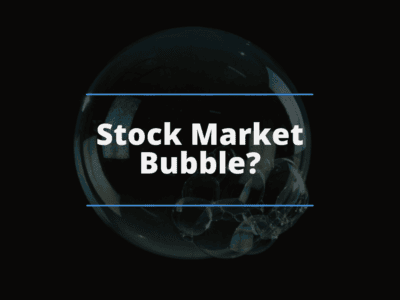The stock market’s recent performance has been impressive, but it’s also sparked a familiar question: Are we in a stock market bubble? A bubble occurs when asset prices become dramatically inflated beyond their intrinsic value, driven by speculation and over-enthusiasm. When the bubble inevitably bursts, the results can be devastating for investors.
History is littered with stock market bubbles, from the Dutch tulip mania of the 1600s to the dot-com boom of the late 1990s. While it’s impossible to predict with certainty if the current market is a bubble, understanding the telltale signs and potential risks can help you make informed investment decisions.
What Causes a Stock Market Bubble?
Several factors can contribute to the formation of a stock market bubble:
- Investor Euphoria: When the market is on an extended bull run, investors can become overly optimistic, neglecting caution, and jumping on the bandwagon out of fear of missing out.
- Speculation: Bubbles flourish when investors prioritize quick gains over the underlying value of an asset, focusing on price trends rather than company fundamentals.
- Easy Access to Credit: Low interest rates and readily available margin (borrowing money to buy stocks) can fuel speculative buying and inflate prices.
- Herd Mentality: Investors often follow the crowd, buying what everyone else is buying, further amplifying price increases.
Classic Signs of a Stock Market Bubble
Here are some of the classic indicators that may signal a stock market bubble:
- High Valuations: Metrics like price-to-earnings (P/E) ratios, price-to-sales ratios, or market capitalization compared to GDP can indicate if stocks are overvalued relative to their earnings potential or the overall economy.
- Irrational Exuberance: An overwhelmingly bullish sentiment amongst investors, with widespread disregard for potential risks, is a common bubble sign.
- Flood of New Investors: A sudden influx of inexperienced investors entering the market, often driven by hype and promises of easy money, can be a red flag.
- Focus on ‘Hot’ Sectors: Obsession with certain sectors or technologies, with prices soaring based on speculation rather than sound fundamentals.
- Increased Use of Margin Debt: Rising levels of margin debt suggest investors are taking on excessive risk to buy stocks, which can exacerbate market volatility.
Are We Seeing These Bubble Indicators Now?
Analyzing the current market for these bubble indicators requires a nuanced approach. Let’s examine some key areas:
Are stock valuations overinflated?
While some traditional valuation metrics do signal high valuations, it’s essential to consider factors like low-interest rates and potential future earnings growth. (Include a relevant chart or table comparing current valuations to historical averages).
Is investor sentiment overly bullish?
Recent surveys and market indicators suggest a mix of optimism and caution among investors. While there’s no rampant euphoria as seen in previous bubble peaks, pockets of excessive optimism might exist.
Are there signs of ‘newbie’ investors and speculation?
The rise of commission-free trading platforms has democratized investing, but also potentially fueled more speculative behavior among less experienced investors.
How does leverage compare to past bubble periods?
Current margin debt levels are concerning but haven’t reached the extremes seen in previous market bubbles.
Arguments Against a Current Stock Market Bubble
It’s important to remember that there are compelling arguments against the idea that we’re in a full-blown stock market bubble right now:
- Strong Corporate Earnings: Many companies, particularly in certain sectors, have shown healthy earnings growth, justifying some degree of higher valuations.
- Economic Context: The post-pandemic economic recovery (or any relevant economic context for the time period of the article) could support continued market growth.
- Low-Interest Rates: Low-interest rates make stocks relatively more attractive compared to bonds, potentially justifying higher prices.
- Lack of Widespread Leverage: While margin debt is a concern, it hasn’t reached the alarming levels seen in previous bubble periods.
Could This be a Sector-Specific Bubble?
Even if the overall market isn’t in a bubble, certain sectors or individual stocks might exhibit bubble-like characteristics. Technology stocks, for example, have seen significant valuations, and some analysts warn of potential overhype and unsustainable growth projections in specific areas.
How to Protect Your Portfolio (Regardless of a Bubble)
Whether or not a full-fledged market bubble is looming, here are essential strategies to protect your investments:
- Diversification is Key: Spread your investments across different asset classes (stocks, bonds, real estate, etc.) and various sectors to minimize the impact of any single market downturn.
- Understand Your Risk Tolerance: Be honest about your comfort level with risk and align your portfolio accordingly.
- Focus on Long-Term Investing: Avoid the temptation to time the market or chase short-term gains. A long-term investment horizon offers time to ride out market fluctuations.
- Dollar-Cost Averaging: Invest a fixed amount at regular intervals, regardless of market conditions, to reduce average cost per share.
- Don’t Try to Time the Market: Trying to predict market tops and bottoms is incredibly difficult. Stay invested and avoid emotional selling based on fear.
Conclusion
Determining whether we’re in a stock market bubble is difficult, and experts hold diverse views. While there are some concerning signs, there are also counterarguments and factors that differentiate the current market from classic bubble scenarios.
Regardless of whether the market experiences a dramatic correction, the principles of sound investing remain crucial. By focusing on diversification, long-term goals, and managing your risk tolerance, you can position your portfolio to weather market storms and achieve your financial objectives.
Remember, investing always involves some degree of risk. Educate yourself, consult financial advisors if needed, and make investment decisions aligned with your individual circumstances.
